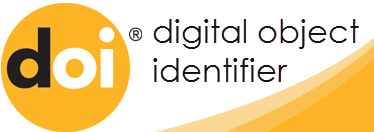WRITING ANXIETY IN THE DIGITAL AGE: EXPLORING THE EFFECTS OF TECHNOLOGY AND TIME MANAGEMENT ON STUDENT WRITING CONFIDENCE
Abstract
University students navigate a world brimming with digital distractions and demands, potentially fueling writing anxiety. This study delves into the intricate interplay between technology use and time management, exploring their combined impact on writing confidence. Employing a mixed-methods design incorporating a quantitative survey and qualitative interviews, we investigated student perceptions of their technology use habits, time management skills, and writing anxiety levels. The survey was administered to 200 undergraduate students from diverse disciplines, followed by semi-structured interviews with a purposeful sample of 20 participants representing varying levels of technology use and time management proficiency. Our analysis revealed a multifaceted relationship between these factors. Students reported frequent social media use, often leading to procrastination and heightened anxiety around writing tasks. Qualitative interviews further illuminated feelings of overwhelm and distraction due to constant digital notifications and multitasking attempts. Conversely, effective time management strategies – such as planning, scheduling, and utilizing focused work periods – emerged as protective factors against anxiety. Students employing these strategies reported experiencing greater control over their digital environment and approaching writing with increased confidence. This study highlights the complex realities of writing in the digital age, where technology can both hinder and empower writing experiences. We advocate for a multi-pronged approach to address writing anxiety. Recommendations include cultivating digital mindfulness practices to reduce distractions, implementing efficient time management techniques to foster control and organization, and incorporating anxiety-reduction strategies to build resilience and self-compassion. By equipping students with these tools, we can empower them to navigate the digital landscape with confidence and flourish in their academic writing endeavors.
References
Beilock, S. L. (2010). Choke: What the secrets of the brain reveal about getting it right when you have to. Free Press.
Cheng, Y. S. (2004). A measure of second language writing anxiety: Scale development and preliminary validation. Journal of Second Language Writing, 13(4), 313-335. https://doi.org/10.1016/j.jslw.2004.07.001
Claessens, B. J. C., Van Eerde, W., Rutte, C. G., & Roe, R. A. (2007). A review of the time management literature. Personnel Review, 36(2), 255-276. https://doi.org/10.1108/00483480710726136
Daly, J. A., & Miller, M. D. (1975). The empirical development of an instrument to measure writing apprehension. Research in the Teaching of English, 9(3), 242-249.
Graham, S., & Harris, K. R. (2003). Students with learning disabilities and the process of writing: A meta-analysis of SRSD studies. In H. L. Swanson, K. R. Harris, & S. Graham (Eds.), Handbook of learning disabilities (pp. 323-344). Guilford Press.
Graham, S., Harris, K. R., & Larsen, L. (2001). Prevention and intervention of writing difficulties for students with learning disabilities. Learning Disabilities Research & Practice, 16(2), 74-84. https://doi.org/10.1111/1540-5826.00014
Hewett, B. L. (2015). The online writing conference: A guide for teachers and tutors. Bedford/St. Martin's.
Klassen, R. M., Krawchuk, L. L., & Rajani, S. (2008). Academic procrastination of undergraduates: Low self-efficacy to self-regulate predicts higher levels of procrastination. Contemporary Educational Psychology, 33(4), 915-931. https://doi.org/10.1016/j.cedpsych.2007.07.001
MacArthur, C. A. (2009). Reflections on research on writing and technology for struggling writers. Learning Disabilities Research & Practice, 24(2), 93-103. https://doi.org/10.1111/j.1540-5826.2009.00283.x
Rosen, L. D., & Behrens, S. (2017). The distracted mind: Ancient brains in a high-tech world. MIT Press.
Rosen, L. D., Carrier, L. M., & Cheever, N. A. (2013). Facebook and texting made me do it: Media-induced task-switching while studying. Computers in Human Behavior, 29(3), 948-958. https://doi.org/10.1016/j.chb.2012.12.001
Sana, F., Weston, T., & Cepeda, N. J. (2013). Laptop multitasking hinders classroom learning for both users and nearby peers. Computers & Education, 62, 24-31. https://doi.org/10.1016/j.compedu.2012.10.003
Steel, P. (2007). The nature of procrastination: A meta-analytic and theoretical review of quintessential self-regulatory failure. Psychological Bulletin, 133(1), 65-94. https://doi.org/10.1037/0033-2909.133.1.65
Warschauer, M. (2003). Technology and social inclusion: Rethinking the digital divide. MIT Press.
Zinsser, W. (2013). On writing well: The classic guide to writing nonfiction (30th anniversary ed.). Harper Perennial.











